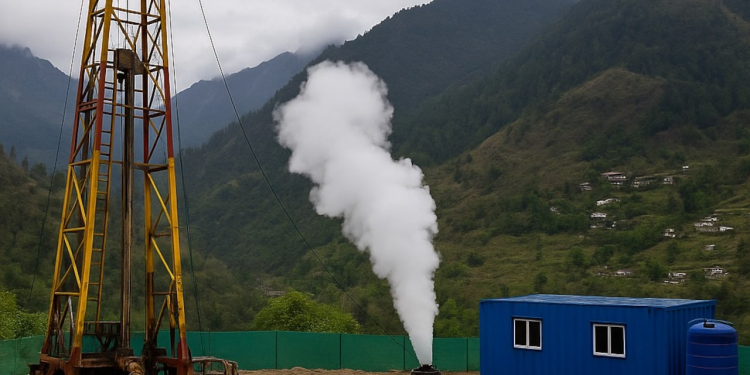The Centre for Earth Sciences and Himalayan Studies (CESHS) has achieved a significant milestone by completing the first geothermal production well in Northeast India at Dirang in Arunachal Pradesh’s West Kameng district. This groundbreaking initiative marks a major advancement in renewable energy development for the Himalayan region and follows two years of extensive geochemical and structural surveys of hot springs in western Arunachal Pradesh.
The pioneering project, spearheaded by CESHS in collaboration with international partners, has identified Dirang as a medium-to-high enthalpy geothermal zone, with subsurface temperatures reaching approximately 115°C—ideal conditions for direct-use applications that could transform local livelihoods in this high-altitude community.
“This marks the beginning of a clean energy revolution in the Eastern Himalayas,” said CESHS Director Tana Tage, highlighting the project’s potential to create sustainable development opportunities. “It showcases how geothermal energy can be harnessed not just for environmental benefit, but also to uplift rural communities and transform regional development.”
According to Rupankar Rajkhowa, head of the geosciences division at CESHS, the geothermal resource is expected to support multiple eco-friendly technologies essential for mountain communities, including drying systems for local produce and meat, space heating for homes and businesses, and climate-controlled storage facilities—all critical infrastructure for enhancing resilience in the challenging Himalayan environment.
The successful drilling operation was executed with minimal environmental disruption, reflecting the project’s commitment to sustainable exploration methods. This achievement was made possible through a multinational consortium involving the Norwegian Geotechnical Institute (NGI), Icelandic geothermal company Geotropy ehf, and Guwahati-based Guwahati Boring Service (GBS), working in partnership with the Arunachal Pradesh government and India’s Ministry of Earth Sciences.
The collaboration builds on earlier feasibility studies conducted in March 2024, when CESHS, NGI, and Geotropy investigated several hot spring sites in Dirang and other locations in Arunachal Pradesh. Geological mapping in the region has revealed significant tectonic features conducive to geothermal activity, making it an ideal location for harnessing this renewable energy source.
This achievement comes after CESHS signed important agreements with organizations including the Geological Survey of India in April 2025 and Oil India Limited in February 2024, both focused on developing geothermal energy potential in the region. These partnerships have created a foundation for the current breakthrough.





